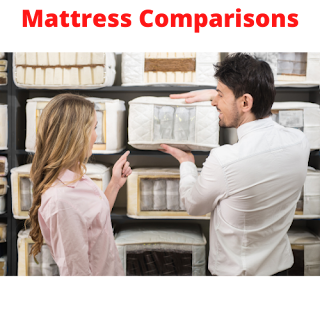Mattress comparisons
A mattress comparison is a way of throwing one or more mattresses towards one another to see which one offers the best product for the same price. This does not mean that one bed is 'more comfortable' than the other end-user but should be the first task to reduce the selection from 4000 models or mattresses to ten and then to your last three. Let us guide you on how to compare mattresses properly.
Step 1. Decide on a budget
What's the biggest thing you'll pay for in your dream mattress? How much should you spend discussing in detail here? For example, we have set our budget at £ 1500. This is not a small amount (but not a lot of money either), but we know that this should make you a well-designed, well-built mattress. When considering a bedside budget, you need to compare it to how much you can afford to spend on the couch. This is because you will be spending more time in bed than on the couch.
Step 2. Select three or four vendors
Initially, we will look at Dreams / Bensons / Furniture Village / John Lewis to see what they have to offer in a budget of around £ 1500. Marks & Spencers, Vispring, and Savoir (if you're lucky enough) could also play a role in your new mattress search. More on this later.
Step 3. Start writing your notes
The form below is a simplified version of what we use when looking at products from various manufacturers. It will give you an idea and information you need to know and to whom you can turn for more information. Our mattress comparison tool does all of this, which can save you time.
This important job is to give you a quick and easy way to show you where you are starting to show the amount you are willing to pay. You may find that you do not need to spend £ 1500 or vice versa, you also find what you see does not meet your requirement, and you may need to increase your budget to buy a bed! This first step helps you to quickly identify what to expect and not expect your price point.
Remember, this is just the beginning of writing down the first ten products that fit your budget and keep your choice consistent with the price. This is so that you know where to draw the line.
Step 4. Springs and upholstery comparison
So now you know what £ 1500 or what you can get ready for further processing and replace the remaining models as much as possible with the two most essential extruders and cooling equipment.
Step 5. Check the details of the mattress
We now have four models totaling between £ 1400 - £ 1500. Now check out the Intrinsic details of the upholstery. The sources themselves are the same (as similar) does not make the assumption. The spring count difference is also so named in the 150 packs that will not affect the user in any form or form.
In all of the above descriptions, we see that they all contain the same amount of spinning material: wool/cotton/horsetail and horsehair. This is what you can expect from reusable mattresses at this price. There is no polyester and no foam in any concealment anything.
We also see that composite upholstery materials vary between 3250 GSM and 4600 GSM. The difference between 1350 GSM is quite large. This requires more information from the seller - the weight of the jewelry may be greater than 4600 GSM or less than 3250 GSM, then you will be able to discard that model at your discretion.
As long as you are in this category, you are just comparing the building materials, everything between the spring wing and the mattress's top fabric. Right now, all you know about the above mattresses is that they contain the same items. You need to understand what is considered acceptable and what is not






0 Comments